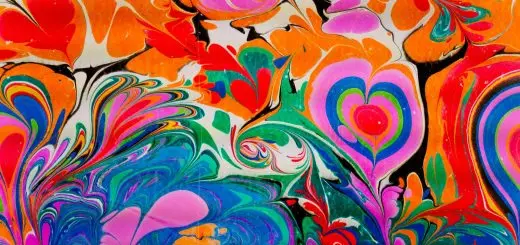How Visualization Helps Access the Subconscious Mind

Looking for more amazing products? Check out our online store and explore our collection here! Happy shopping!
Before diving in, please note: This post is for informational purposes only. If you’d like to know more about how we approach topics, feel free to check out our friendly Disclaimer Page.
Hey there, amazing readers! 
We’re committed to delivering quality posts, and your support (even just sticking around despite the ads) means everything to us. So, bear with us, and thanks for helping us keep the good vibes rolling. Now, on to the fun stuff!
TRANSLATE BUTTON AT THE END OF THE ARTICLE
A Quick Overview
Visualization isn’t just some mystical practice reserved for the enlightened.
It’s a tool we all possess, whether we know it or not.
Over the years, I’ve dived deep into understanding the subconscious mind and how visualization can help us connect with it.
This article is all about exploring that connection.
We’ll break down complex ideas into bite-sized pieces, making it easy for anyone to grasp the magic of visualization in accessing the depths of our subconscious.
So grab a comfy seat, and let’s explore how visualization can change your life for the better!
Understanding the Subconscious Mind: A Quick Overview
The subconscious mind is like a vast library filled with every experience, memory, and emotion we’ve ever had.
It’s where all our automatic thoughts and feelings reside.
Think of it as the hard drive of our brain, quietly storing everything we encounter.
Interestingly, it operates mostly beneath our conscious awareness, influencing our behaviors and decisions without us even realizing it.
Here’s a fun fact: Did you know that our subconscious mind processes information much faster than our conscious mind?
That’s right!
While we consciously think through problems and decisions, our subconscious is at work in the background, sifting through memories and emotions to guide our actions.
It’s also important to note that the subconscious can hold limiting beliefs.
These beliefs can stem from past experiences, societal conditioning, or even parental influence.
For example, if you’ve grown up hearing that "money doesn’t grow on trees," your subconscious might carry that belief into adulthood, affecting your financial decisions.
To put it simply, our subconscious mind is incredibly powerful.
Recognizing its influence can help us understand why we act the way we do.
By tapping into this reservoir of thoughts and feelings, we can facilitate change and growth in our lives.
The Power of Visualization: What It Really Means
Visualization is a mental technique that involves creating vivid images in our minds.
I often think of it as daydreaming with purpose.
But it’s not just about imagining pretty pictures.
It’s about engaging all our senses to experience these images as if they were real.
When I visualize, I try to immerse myself completely.
I imagine the sights, sounds, and even the smells associated with my goals.
It’s like painting a picture in the gallery of my mind, and every brushstroke adds more depth to the image.
This practice can help align our thoughts and feelings with our aspirations.
Many athletes have harnessed the power of visualization to enhance performance.
They mentally rehearse their routines, feeling the rush of adrenaline, hearing the crowd, and visualizing each step toward success.
This technique not only prepares them physically but also mentally.
It creates a sense of familiarity, reducing anxiety and boosting confidence.
Moreover, visualization can foster creativity.
When we visualize, we allow our minds to wander freely, leading us to innovative ideas and solutions.
Imagine brainstorming with your imagination instead of a whiteboard.
This creative freedom can be exhilarating!
In short, visualization transforms thoughts into tangible images, aligning our subconscious mind with our conscious desires.
It serves as a bridge, fostering harmony between what we want and what we believe we can achieve.
How Visualization Unlocks Hidden Thoughts and Emotions
Have you ever felt stuck or overwhelmed, unsure of why you feel the way you do?
This is where visualization can step in like a superhero.
By picturing scenarios or experiences, we can unearth hidden emotions and thoughts that linger in our subconscious.
When I visualize, I often reflect on past experiences.
For instance, I might picture a moment from my childhood, such as a family gathering.
In doing so, I might recall feelings of joy or sadness that I hadn’t fully processed.
This allows me to address those emotions, rather than letting them fester in the background.
Additionally, visualization can help us confront fears.
Imagine honing in on a fear of public speaking.
By visualizing ourselves speaking confidently in front of an audience, we can expose the fear and understand its roots.
This process can lead to breakthroughs, as we learn to reframe our perceptions.
Moreover, visualization serves as a great tool for problem-solving.
When faced with a tough decision, I visualize the potential outcomes.
This practice helps clarify my thoughts and feelings, allowing me to navigate through confusion.
In essence, visualization acts as a flashlight, illuminating the dark corners of our minds.
It sheds light on emotions and thoughts we might not be consciously aware of, guiding us toward understanding and healing.
The Science Behind Visualization and the Subconscious
You might wonder if there’s any scientific backing for visualization.
Spoiler alert: there is!
Research shows that our brains can’t easily differentiate between real experiences and vivid, imagined ones.
Isn’t that wild?
This means that when we visualize, we activate the same neural pathways as if we were experiencing the event in real life.
Studies in neuroscience have shown that visualization can actually change our brain structure and function.
For instance, a study on motor skills found that individuals who mentally rehearsed a task improved their performance almost as much as those who practiced it physically.
Our minds are incredibly powerful!
Moreover, visualization has been linked to reduced anxiety and stress.
When we visualize positive outcomes, our brains release feel-good chemicals like dopamine and serotonin, which can enhance our mood.
It’s like giving our brains a mini-vacation!
Visualizing our goals can also increase motivation.
When we see ourselves achieving what we desire, our brains send signals to take actionable steps.
It’s the push we often need to turn dreams into reality.
So, the next time you think about visualization, remember: it’s not just wishful thinking.
It’s a scientifically backed method that leverages the power of our minds to create change and foster growth.
Everyday Examples of Visualization in Daily Life
Visualization isn’t confined to meditation or private practice; it’s something we often do unconsciously every day.
I like to think of it as a secret superpower we all possess.
Here are a few relatable examples:
Morning Routines: Many of us visualize our day during our morning rituals.
I often picture my meetings, anticipating how I want them to unfold.
This helps me set a positive tone for the day.
Goal Setting: When I set a goal, I visualize the process and the outcome.
Whether it’s losing weight or achieving a career milestone, creating a mental picture reinforces my commitment.
Sports and Hobbies: Athletes aren’t the only ones who benefit from visualization.
I’ve found that picturing myself succeeding in a hobby, like painting, boosts my confidence and creativity.
Travel Plans: Planning a vacation?
Visualizing the sights, sounds, and feelings of being in a different place can heighten excitement and anticipation.
Interpersonal Relationships: Before having a tough conversation, I visualize the dialogue.
This prepares me, making me feel more confident and reducing anxiety.
Public Speaking: I visualize myself standing confidently in front of an audience, articulating my thoughts clearly.
This simple exercise lessens my fear and enhances my performance.
These everyday examples show how easily we can incorporate visualization into our lives.
It’s not just for the spiritual; it’s practical and actionable for everyone!
Techniques to Enhance Your Visualization Skills Today
Ready to sharpen those visualization skills?
Fantastic!
Here are some techniques you can try right away:
Mindful Breathing: Start by taking a few deep breaths.
This helps ground you, clearing your mind for visualization.
I often find that calming my breath makes a world of difference.
Start Small: Don’t feel pressured to visualize monumental goals right away.
Begin with simple images.
Picture an enjoyable moment, like a sunny day at the park.
Use All Senses: Engage all five senses to enrich your visualization.
What do you hear?
Smell?
Feel?
The more detail, the more powerful the experience becomes.
Create a Vision Board: Gather images, quotes, and symbols that resonate with your goals.
Hang it somewhere visible, and take a moment each day to visualize the life you want.
Practice Daily: Visualization is like a muscle; the more you use it, the stronger it gets.
Dedicate a few minutes each day to practice.
Guided Visualization: Use audio resources or apps that offer guided visualizations.
They can help direct your thoughts and create vivid mental images.
Journal Your Visualizations: After each session, jot down what you visualized.
This helps track progress and reinforces the experience.
Repeat Affirmations: While visualizing, pair it with positive affirmations.
This strengthens the intention behind your images.
Visualize Before Sleep: Spend a few minutes each night visualizing your goals before drifting off.
Your subconscious mind absorbs these images while you sleep.
Stay Patient: It takes time to develop visualization skills.
Be patient with yourself and trust the process.
With these techniques, you’ll find that enhancing your visualization skills can be a joyful and rewarding journey.
Creating a Visualization Practice: Step-by-Step Guide
Now that you’re pumped about visualization, let’s create a practice that resonates with you!
Here’s a simple, step-by-step guide:
Find a Quiet Space: Choose a comfortable spot where you won’t be interrupted.
This could be your bedroom, a cozy corner, or even a park.
Set a Timer: If you’re new to visualization, set a timer for 5-10 minutes.
This helps you focus without worrying about the clock.
Close Your Eyes: Close your eyes and take several deep breaths.
Inhale deeply through your nose and exhale slowly through your mouth.
Choose Your Focus: Decide what you want to visualize.
It could be a goal, a dream, or simply an enjoyable experience.
Engage Your Senses: Start picturing the scene.
What do you see?
Hear?
Feel?
Taste?
Smell?
Immerse yourself in the experience.
Allow Emotions to Flow: As you visualize, notice any emotions that arise.
Embrace them, whether they’re joyful or challenging.
Stay Present: If your mind wanders, gently guide it back to your visualization.
It’s perfectly normal for thoughts to drift.
Conclude with Gratitude: When the timer goes off, take a moment to express gratitude for the experience.
Thank your mind for the journey.
Journal Your Experience: After your practice, jot down your thoughts and feelings.
This reinforces the practice and helps you track progress.
Repeat Regularly: Consistency is key!
Aim to practice visualization daily or several times a week.
Creating this practice can be incredibly rewarding.
It’s not just about visualization; it’s about fostering a deeper connection with yourself and your aspirations.
How Visualization Affects Your Mental Well-Being
Visualization can work wonders for our mental well-being.
Here’s how:
Reduces Stress: Engaging in visualization can transport us to a calmer mental space.
Imagining peaceful scenes can lower stress levels significantly.
Enhances Focus: By visualizing our goals, we can train our minds to stay focused.
It’s like a mental exercise that sharpens our attention.
Boosts Self-Esteem: Visualizing success can foster a sense of accomplishment, enhancing our self-worth and confidence.
Encourages Positive Thinking: The act of visualizing positive outcomes can help shift our mindset, promoting optimism and resilience.
Improves Emotional Resilience: Visualization helps us process feelings and cope with challenges, making it easier to navigate difficult emotions.
Cultivates Mindfulness: The practice encourages a state of mindfulness.
Focusing on our visualizations fosters presence and awareness.
Promotes Creativity: Engaging in visualization can unleash our creativity, allowing us to explore new ideas and solutions.
Facilitates Healing: Many people find that visualization can aid in emotional healing, helping them confront and process past traumas.
Increases Motivation: Visualizing our goals can ignite a fire within us, motivating us to take actionable steps toward achieving them.
Enhances Overall Well-Being: When we feel good mentally, it positively impacts other areas of our lives, including relationships and physical health.
In a nutshell, visualization isn’t just a fun pastime; it’s a powerful tool for nurturing mental well-being and fostering a positive mindset.
Overcoming Blocks: Visualization Techniques That Work
Sometimes, we encounter mental blocks that hinder our ability to visualize effectively.
Here are some techniques to overcome those barriers:
Acknowledge the Block: The first step is recognizing and accepting the block.
It’s okay to feel stuck; we all experience this.
Use Guided Imagery: Listening to a guided visualization can help ease you back into the practice.
It provides structure and direction.
Change Your Environment: Sometimes a simple change in scenery can spark creativity.
Try visualizing in a different location, like a park or café.
Visualize Simple Things: If you’re struggling, start by visualizing something simple, like your favorite food.
This helps ease you into the process.
Incorporate Movement: Physical activity can help shake off mental blocks.
Go for a walk while visualizing, and let the fresh air invigorate your mind.
Set Specific Intentions: Instead of general visualization, focus on specific intentions.
It can provide clarity, making it easier to visualize.
Practice Affirmations: Pair your visualizations with positive affirmations.
This can reinforce your beliefs and dispel negativity.
Engage in Creative Activities: Sometimes, engaging in art or writing can unlock creativity, making visualization easier.
Seek Support: If you’re really feeling stuck, consider talking to a friend or therapist.
Sometimes, sharing our struggles can provide relief and insight.
Celebrate Small Wins: Acknowledge any progress you make.
Celebrating even the smallest victories can boost your motivation.
By using these techniques, we can effectively overcome blocks and enhance our visualization practice, paving the way for personal growth and transformation.
Success Stories: People Who Used Visualization Effectively
Let’s sprinkle in some inspiration!
Here are a few success stories of individuals who turned to visualization to achieve their goals:
Jim Carrey: The comedian and actor famously wrote himself a check for $10 million for “acting services rendered” and dated it for Thanksgiving 1995.
He visualized achieving this goal, and years later, he received a role in “Dumb and Dumber” that paid him exactly that amount.
Oprah Winfrey: The media mogul often speaks about the power of visualization in her life.
She credits her positive mindset and visualization practices as keys to her success.
Michael Phelps: The Olympic swimmer used visualization techniques to prepare for races.
He would mentally rehearse every aspect of his performance, allowing him to excel in the pool.
Ellen DeGeneres: The beloved talk show host has talked about visualizing her career goals.
She envisioned herself hosting a talk show long before it became a reality.
Tony Robbins: The motivational speaker and author emphasizes visualization as a vital tool in achieving personal goals, helping many people make significant life changes.
These stories highlight the profound impact visualization can have on our lives.
When we harness this powerful tool, we can pave our paths toward success and fulfillment—just like they did!
Visualization and Meditation: A Perfect Match for Growth
Visualization and meditation go hand in hand.
Both practices can enhance our personal growth in unique ways.
Here’s how they complement each other:
Calming the Mind: Meditation helps quiet the mind, creating a peaceful space conducive to visualization.
It’s like setting the stage for a beautiful performance.
Deepening Focus: Meditation trains our focus, making it easier to visualize with clarity and richness.
It’s a fantastic way to sharpen our mental imagery skills.
Enhancing Creativity: Engaging in both practices can unleash creativity and new ideas.
When our minds are relaxed, we’re more open to inspiration.
Promoting Mindfulness: Both visualization and meditation cultivate mindfulness, helping us remain present and aware.
This can deepen our connection to our thoughts and feelings.
Reinforcing Positive Thinking: Combining visualization with meditation allows us to visualize positive outcomes, reinforcing optimism and motivation.
Encouraging Emotional Healing: Pairing the two can aid in processing emotions and past traumas, fostering healing and growth.
Creating a Routine: Establishing a routine that includes both practices can enhance their effectiveness, leading to lasting change.
Boosting Self-Confidence: Regularly visualizing success through meditation helps build self-confidence and empowers us to take action.
Facilitating Goal Achievement: Meditating on our goals while visualizing them enhances clarity and intention, propelling us toward success.
Promoting Overall Well-Being: Together, these practices can enhance our mental, emotional, and physical well-being, creating a balanced and fulfilling life.
Incorporating visualization into your meditation practice can be a game-changer.
It can deepen your practice and amplify your growth in ways you never thought possible!
Embrace the Power of Visualization for a Joyful Life!
In conclusion, visualization is a powerful tool that can help us connect with our subconscious mind, revealing hidden thoughts and emotions.
By embracing this practice, we can unlock our potential, enhance our mental well-being, and achieve our goals.
Whether you’re an athlete, an artist, or just someone looking to navigate life’s challenges, visualization can serve as your trusty companion on the journey to growth and joy.
So, are you ready to start visualizing your dreams?
Dive into the practice!
Remember, it’s about the journey, not just the destination.
As you embark on this path, keep your heart open, your mind clear, and your vision vivid.
The possibilities are endless, and your joy awaits!

The Enlightenment Journey is a remarkable collection of writings authored by a distinguished group of experts in the fields of spirituality, new age, and esoteric knowledge.
This anthology features a diverse assembly of well-experienced authors who bring their profound insights and credible perspectives to the forefront.
Each contributor possesses a wealth of knowledge and wisdom, making them authorities in their respective domains.
Together, they offer readers a transformative journey into the realms of spiritual growth, self-discovery, and esoteric enlightenment.
The Enlightenment Journey is a testament to the collective expertise of these luminaries, providing readers with a rich tapestry of ideas and information to illuminate their spiritual path.
Our Diverse Expertise
While our primary focus is on spirituality and esotericism, we are equally passionate about exploring a wide range of other topics and niches 

To ensure we provide the most accurate and valuable insights, we collaborate with trusted experts in their respective domains 
Our blog originally focused on spirituality and metaphysics, but we’ve since expanded to cover a wide range of niches. Don’t worry—we continue to publish a lot of articles on spirituality! Frequently visit our blog to explore our diverse content and stay tuned for more insightful reads.
Hey there, amazing reader! 
Check out our store here and take a peek at some of our featured products below! Thanks for being awesome!












